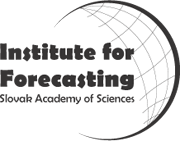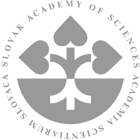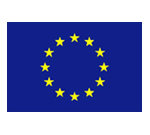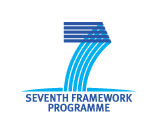  Institute for Forecasting of the Slovak Academy of Sciences Institute for Forecasting of the Slovak Academy of Sciences
The Institute for Forecasting of the Slovak Academy of Sciences acts as a research and policy body. Research concentrates on international and national projects forecasting and foresight, human dimension of global environmental change, co-evolution of institutional and technology change. Since 1998, IF SAS is co-publisher of the Journal of Economics and provides policy advice in areas of economics, innovations and knowledge society, science and technology, environmental policy. Since 2009 IF SAS acts as a partner of SPECTRA+ project supported by the Research & Development Operational Programme funded by the ERDF. The work of the RESPONDER will be undertaken by the The Center for Trans-disciplinary Study of Institutions, Evolution and Policies (CETIP) a virtual research centre of IF-SAS dedicated to introduce ideas from institutional, evolutionary and ecological economics into the European research, public debate and policy making. CETIP support trans-disciplinary research and training in Europe, primarily in the region of Central and Eastern Europe participating on following international projects:
- Integrated Development of Agricultural and Rural Institutions in CEEC’s (IDARI 2003-2006),
- Regional Innovation Policy Impact Assessment (EUROCOOP 2005-2008),
- Rationalising Biodiversity Conservation in Dynamic Ecosystems (RUBICODE 2006-2009),
- Emerging the Emerging Theories and Methods in Sustainability Research (THEMES 2006-2009).
- Multi-level Governance of Natural Resources (GoverNat 2006-2010),
- The Transformation of Global Environmental Governance (TGEG-2008 - 2012)
For further information, please visit http://www.prog.sav.sk/.
Persons involved
 |
Richard Filcak has extensive experience as a researcher and social and environmental policy development projects coordinator working in Central Europe, Balkan and former Soviet Union regions. He studied at the International Institute for Industrial Environmental Economics at the Lund University Sweden, and received his Ph.D. from the Central European University in Budapest, Hungary. He worked on forecasting and scenario building projects, policy assessment and implementation. He is contributing author to the UNEP Global Environmental Outlook GEO 4, published 2 books, several book chapters and articles in magazines. He is senior researcher at the Institute for Forecasting Studies/Slovak academy of Sciences where he focuses on foresight methodologies and research. In general, his work and research interests are focused on social, economic and environmental trends and impacts of development in Europe - with particular attention to the exposure to environmental and social risks, vulnerability and access to resources. |
 |
Štefan Sabo received his PhD in economics from the University of Economics in Bratislava, Slovakia. He is researcher at the Institute for Forecasting, Slovak Academy of Sciences, where his work is focused on Structural adjustment of a small opened economy. In general, his work and resarch interests are focused on international economics in Europe Union relations, monetary and fiscal policy. |
 |
Svetlana Dobrovicova is a researcher and PhD student at the Institute of Forecasting, Slovak Academy of Sciences and at the Technical University in Bratislava, Slovakia (Institute of Management). She graduated from the Faculty of National Economy at the University of Economics in Bratislava, Slovakia (Master’s Program - Finance). She worked as a project manager for the Ministry of Environment of the Slovak Republic in the Department of the implementation of projects of water management and flood defenses. Her research interest includes environmental protection from natural disasters, especially in the field of water management. |
|
















 Institute for Forecasting of the Slovak Academy of Sciences
Institute for Forecasting of the Slovak Academy of Sciences